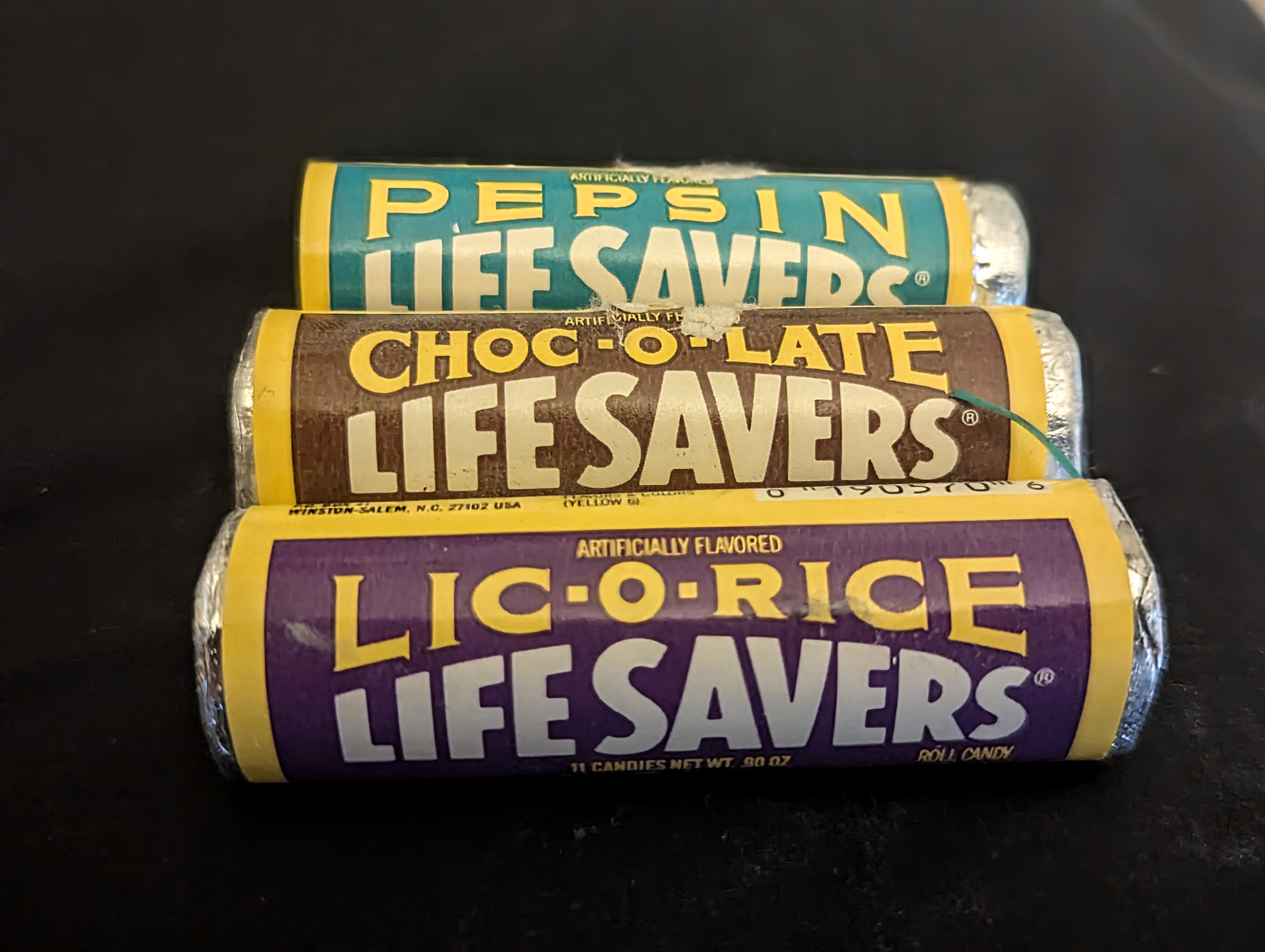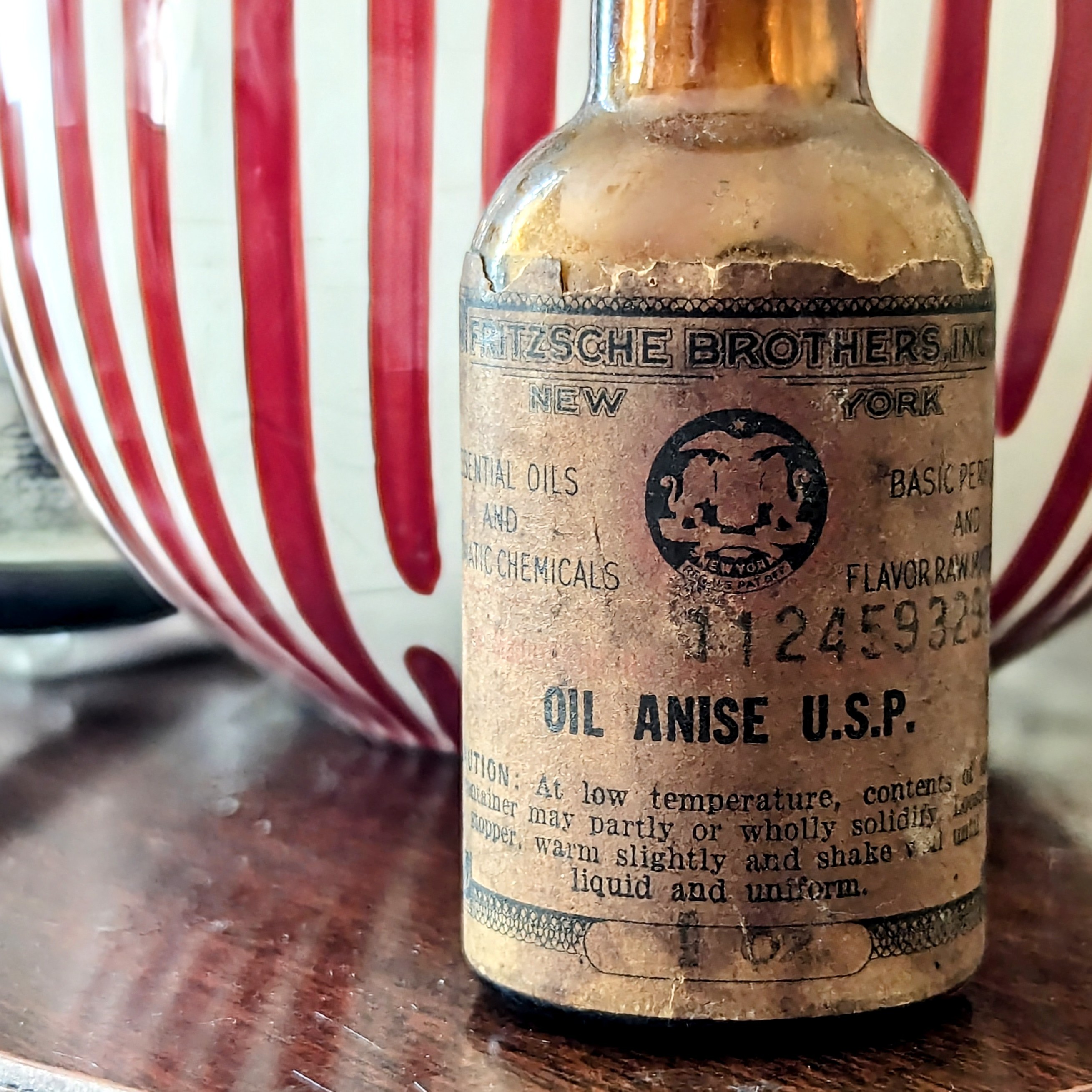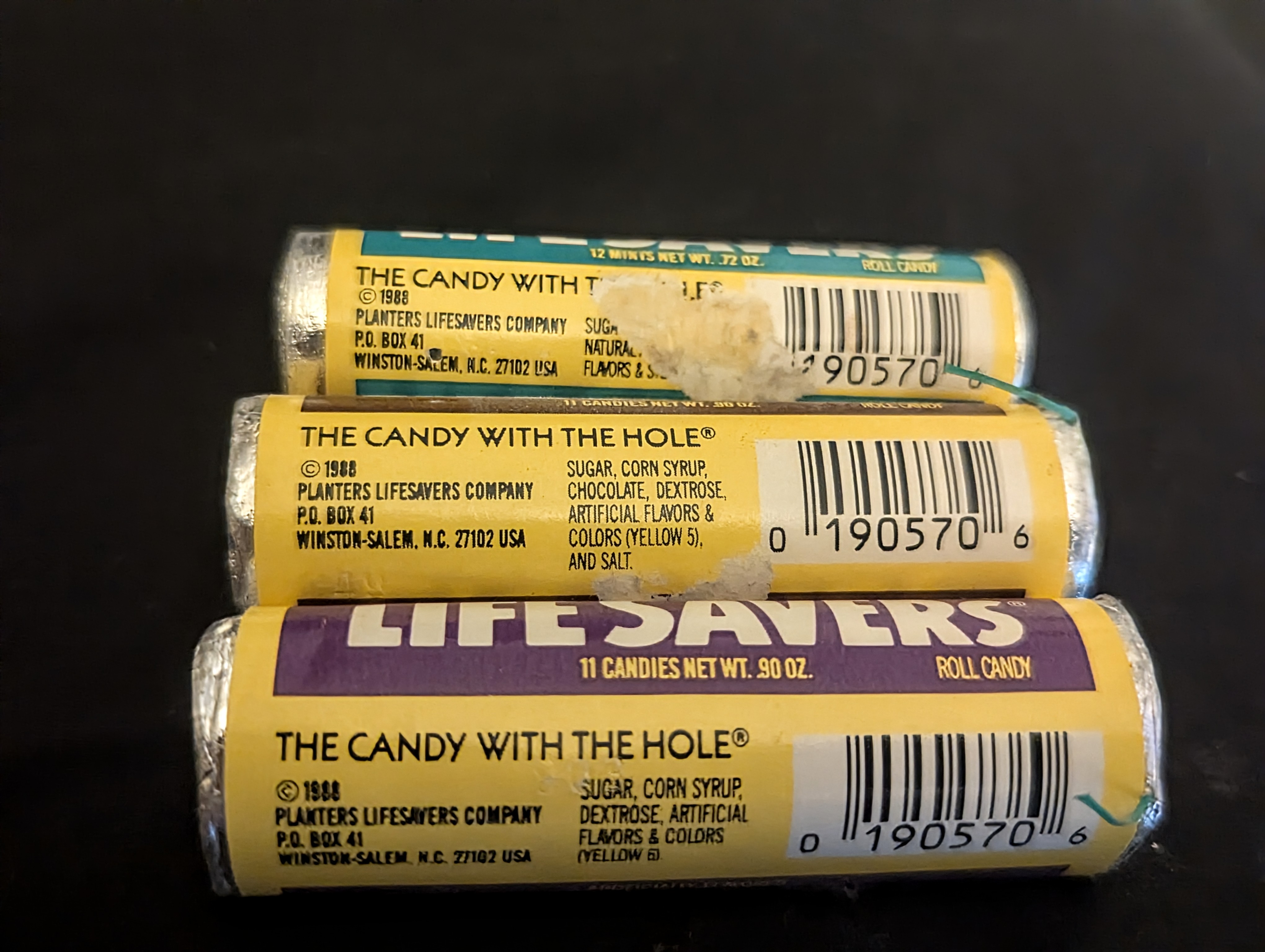 What is the difference amongst the various Licorice-like Life Savers? Why were they so popular in the early days yet nearly nonexistent in the last 50 years?
What is the difference amongst the various Licorice-like Life Savers? Why were they so popular in the early days yet nearly nonexistent in the last 50 years?
Flav⭕rs
The Recipe
There have been at least 4 licorice-like flavors of Life Savers:
- Anise - United States (possibly boiled candy) at least 1930
- An⭕seed - Australia
- Black Licorice (Liquorice Noir) - Canada 2000 - ingredients: sugar, glucose, natural licorice flavor, dextrose, artificial flavour, colour
- Lic-⭕-Rice - United States at least 1930 to 1938; 1988-1989 ingredients: sugar, corn syrup, dextrose, artificial flavors and colors
 After all, what is licorice flavor--natural or artificial? The natural flavor comes from the licorice root in Africa, Asia and Europe. But there are at least a few other things that have a very similar flavor. Anise seed is one, and fennel seed is another--after all, the two of those together flavor absinthe, an alcoholic drink with what people referred to as a "licorice" flavor. And in Asian cultures, star anise delivers a similar flavor. As mentioned elsewhere in the museum, Fritzsche Brothers produced flavors used in some Life Savers products. Their catalogs include both licorice and anise, either of which could reasonably be used.
After all, what is licorice flavor--natural or artificial? The natural flavor comes from the licorice root in Africa, Asia and Europe. But there are at least a few other things that have a very similar flavor. Anise seed is one, and fennel seed is another--after all, the two of those together flavor absinthe, an alcoholic drink with what people referred to as a "licorice" flavor. And in Asian cultures, star anise delivers a similar flavor. As mentioned elsewhere in the museum, Fritzsche Brothers produced flavors used in some Life Savers products. Their catalogs include both licorice and anise, either of which could reasonably be used.
However, it should be noted that in the United States, both Lic-⭕-Rice and Anise were sold concurrently, according to an advertisement in the 1930 Gouverneur High School paper The Deanonian. 12 flavors were available: Orange, Lemon, Lime, Grape, Anise, Cough Drops, Pep⭕mint, Wint⭕green, Vi⭕let, Cl⭕ve, Cinn⭕mon, and Lic⭕rice.
It's actually a little hard to tell were there any of the flavors were pressed dextrose (like Pep-⭕-mint) or boiled candies (like Wild Cherry).


The Los Angeles Times detailed a 1988-9 marketing scheme Planters Life Savers had to bring back the golden oldies:
"The company’s Holland [Michigan] plant recently began producing the “Limited Edition Nostalgia Flavors”--”Lic-⭕-Rice,” “Choc-⭕-Late” and “Pepsin.” Stores began carrying them a week ago.
"All three of the limited edition flavors were developed in the 1920s. Lic-⭕-Rice and Pepsin were discontinued in 1938, and Choc-⭕-Late was produced until 1968.
“ 'Our society’s general interest in nostalgia is booming these days, and many Americans associate LifeSavers candy with warm memories of their childhood and quieter, simpler life styles,' said Jeff Walters, associate product manager for the Winston-Salem, N.C.-based company.
"Company officials said the three flavors will be sold for a limited time in a response to consumers’ requests."
There are a few odd things about this.
- The original Lic-⭕-rice had an orange wrapper and the mints themselves were orange. I wonder why the reboot was purple? That wrapper shade previously belonged to Vi-⭕-let.
- The original Pepsin? I haven't been able to find it. The original Clarence Crane Life Savers were Peppermint. I've looked through dozens of advertisements, and I have been utterly unable to run this product down in either Crane's or Noble's iteration of the company. I realize the L A Times article has indicated that Pepsin was discontinued in 1938. Yet I haven't run into anything from any country about this flavor being started. Except the 1988-1989 reboot.
- The original Choco-⭕-late label was brown, and the mints themselves were brown.
I, for one, relate to nostalgia. My father was a big fan of licorice flavor, and it appealed to me, too. My mother and sister did not like it, so I realized it was a controversial flavor. I also knew that childhood books from previous times mentioned small, sanded hard candies, like licorice, clove cinnamon, and horehound. I was fascinated by all of those flavors--herbaceous flavors. And I would take them back in a heartbeat!
Sources
The Deanonian, 1930; courtesy of the Gouverneur Museum
Photos ©️2024 Karen Smith-Will
Life Savers™️ is a trademarked name currently owned in the US by Mars Wrigley Confectionery, having been owned and/or licensed by many previous companies, varying by country.
